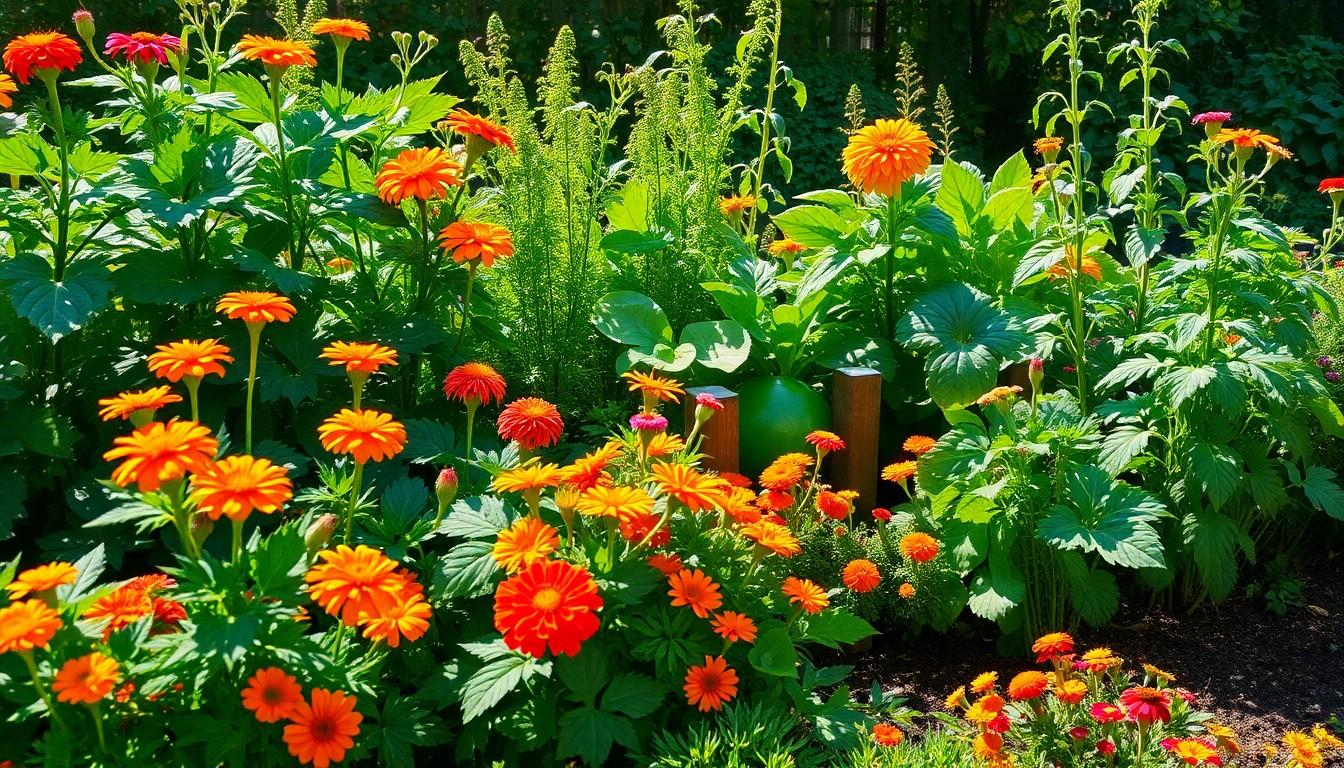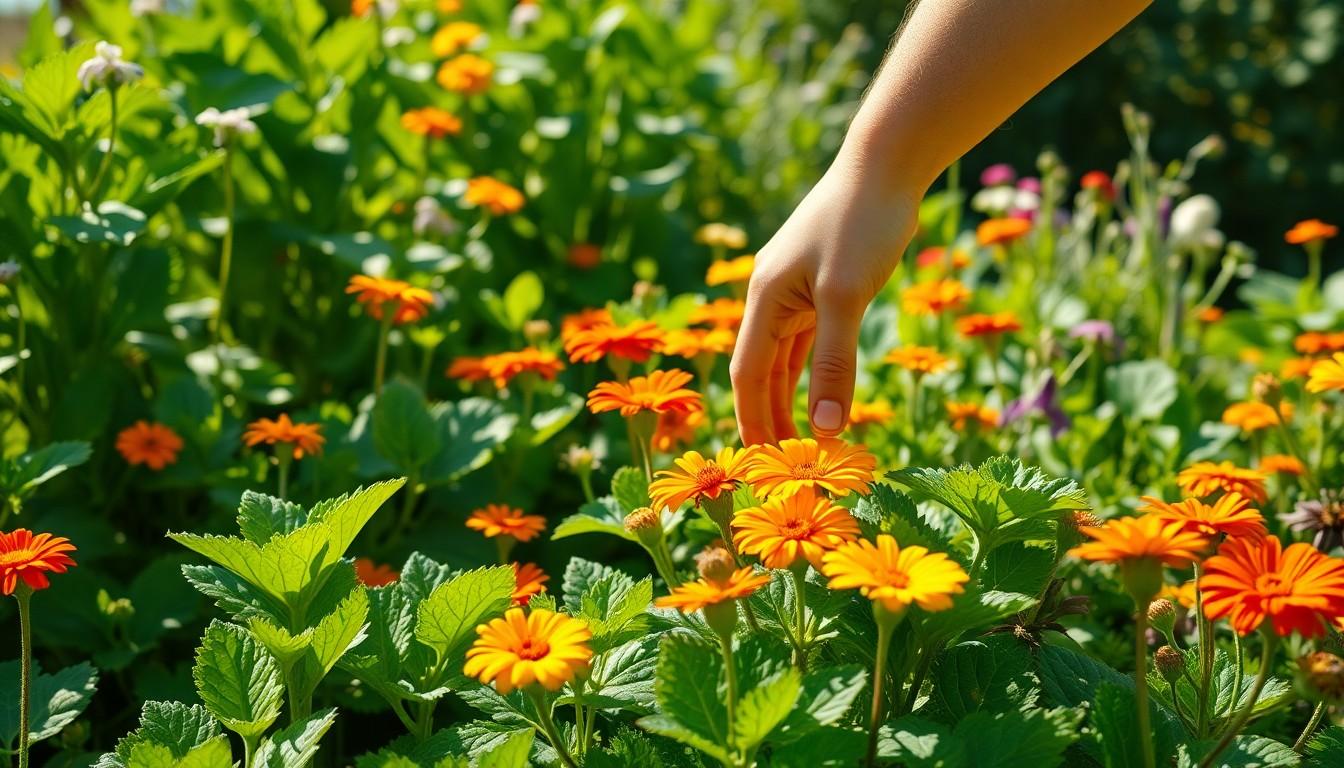Every gardener knows the struggle: one minute, you’re dreaming of a bountiful harvest, and the next, pests are throwing a raucous party in your vegetable garden. But what if there was a way to invite some plant buddies to crash that party? That’s right! Certain plants can help keep those pesky intruders at bay, ensuring your veggies grow up strong and healthy.
Overview of Pest Problems in Vegetable Gardens
Pest problems in vegetable gardens often lead to significant crop damage. Common pests include aphids, caterpillars, and beetles, which can quickly diminish plant health and yield. Each pest species poses unique challenges, requiring specific strategies to manage them effectively.
Aphids, for example, suck sap from plants, weakening their growth. Caterpillars, such as the cabbage looper, chew through leaves, making plants less productive. Beetles, like the cucumber beetle, can spread disease while feeding on plant foliage. Understanding the life cycles and behaviors of these pests aids gardeners in implementing effective control measures.
Environmental factors also play a role in pest infestations. Warm, humid conditions often increase pest populations, while diverse plantings and healthy soil can reduce their impact. Gardeners might notice that areas with a lack of biodiversity tend to attract more pests, as there are fewer natural predators present.
Traditional pest control methods, such as pesticides, raise concerns about environmental health and food safety. Many gardeners seek safer, more sustainable alternatives, focusing on natural solutions that align with organic gardening principles. Companion planting emerges as a viable strategy, where certain plants repel pests, protect vegetables, and promote beneficial insects.
Implementing companion plants in vegetable gardens may involve strategic placements of marigolds or nasturtiums, which deter specific pests while attracting helpful pollinators. Gardeners can create a balanced ecosystem that minimizes pest pressure while enhancing vegetable health through thoughtful plant selections.
Benefits of Using Plants to Deter Pests

Utilizing plants to deter pests provides numerous advantages for vegetable gardens. Gardeners benefit from leveraging natural pest control methods, which promote healthier environments for crops.
Natural Pest Control Methods
Companion plants serve as effective natural deterrents against common pests. Marigolds, for instance, emit a strong scent that repels aphids and nematodes. Nasturtiums attract aphids away from vegetables, acting as a trap crop. Basil and mint produce oils that deter insects like whiteflies and mosquitoes. Garlic, too, releases compounds that repel various pests. Rather than relying solely on chemical pesticides, gardeners can cultivate these companion plants, enhancing biodiversity while managing pest populations.
Environmental Impact
Diverse plant strategies enhance environmental health by reducing chemical reliance. By using companion plants, gardeners contribute to a balanced ecosystem. This approach fosters beneficial insect populations, such as ladybugs and lacewings, which naturally suppress pest populations. Reduced chemical runoff protects local water sources, promoting healthier soil and air quality. Emphasizing plant diversity mitigates pests while enriching habitats for pollinators. In turn, this sustainable method supports the long-term health of both gardens and ecosystems.
Top Plants to Deter Pests
Using companion plants provides an effective approach to managing pests in a vegetable garden. Several specific plants deter pests while boosting the health of surrounding crops.
Marigolds
Marigolds act as a powerful deterrent against aphids, nematodes, and whiteflies. These vibrant flowers emit a scent that repels unwanted insects. Gardeners appreciate their ability to attract beneficial insects, such as ladybugs, which further aids pest control. Planting marigolds near tomatoes enhances growth while safeguarding them from pests.
Nasturtiums
Nasturtiums serve as effective trap plants, luring aphids away from vegetables like cabbage and kale. Their peppery scent deters pests while their flowers and leaves are edible, offering additional benefits to salads. These plants thrive in poor soil, making them easy to grow alongside other crops. By including nasturtiums, gardeners can reduce pest populations naturally.
Basil
Basil repels flies and mosquitoes, making it a versatile companion in the garden. Its aromatic oils serve as a natural pest deterrent, particularly for tomatoes. Growing basil near peppers enhances the flavor and overall health of nearby plants. This herb’s strong fragrance attracts pollinators, contributing to a thriving ecosystem.
Garlic
Garlic offers potent pest-repelling properties due to its strong odor. This plant deters aphids, beetles, and spider mites, protecting vulnerable crops. Intimidating pests with its aroma, garlic can be planted alongside most vegetables as a companion. Additionally, its versatility in the kitchen makes it an invaluable addition to any garden.
Combining Plants for Maximum Effect
Combining specific plants enhances pest deterrence in vegetable gardens. Interplanting complementary species creates a diverse ecosystem that confuses and repels pests. Incorporating marigolds alongside tomatoes effectively wards off aphids and nematodes. Growing basil near peppers not only improves flavor but also discourages flies and mosquitoes.
Utilizing nasturtiums as trap plants provides a strategic advantage. These vibrant flowers attract aphids away from more valuable crops. Garlic planted around carrots and potatoes emits a strong scent that deters numerous pests. Mint shares its aromatic compounds, effectively repelling ants and flea beetles, making it a valuable addition to any garden.
Layering plants for different heights maximizes space and increases biodiversity. Taller plants can provide shade, benefiting lower-growing vegetables. Opting for a variety of colors, scents, and textures attracts beneficial insects that further support pest control efforts. Essential oils extracted from plants like rosemary can also act as natural repellents.
Maintaining proper plant health is essential for this strategy’s effectiveness. Ensuring healthy, vibrant plants strengthens their pest-repelling abilities. Rotating these companion plants each season keeps soil nutrients balanced and disrupts pest life cycles. Establishing well-rooted plants can provide ongoing defense against pests.
Using native plants alongside traditional companion plants increases resilience to local pests. Research into specific plant pairings provides a roadmap to success. Combinations that thrive in your local climate offer the best results. Overall, strategic plant placement and diversity create a thriving vegetable garden that naturally minimizes pest pressure.
Conclusion
Utilizing companion plants in vegetable gardens offers a natural and effective way to combat pests. By strategically selecting and interplanting species like marigolds, basil, and nasturtiums, gardeners can create a balanced ecosystem that not only repels harmful insects but also attracts beneficial ones. This sustainable approach enhances plant health and promotes biodiversity, ultimately leading to a more resilient garden.
Embracing these methods reduces reliance on chemical pesticides while supporting the environment. As gardeners implement these strategies, they contribute to healthier ecosystems and more productive vegetable gardens. With the right combinations and care, it’s possible to enjoy a thriving garden free from the threat of pests.

